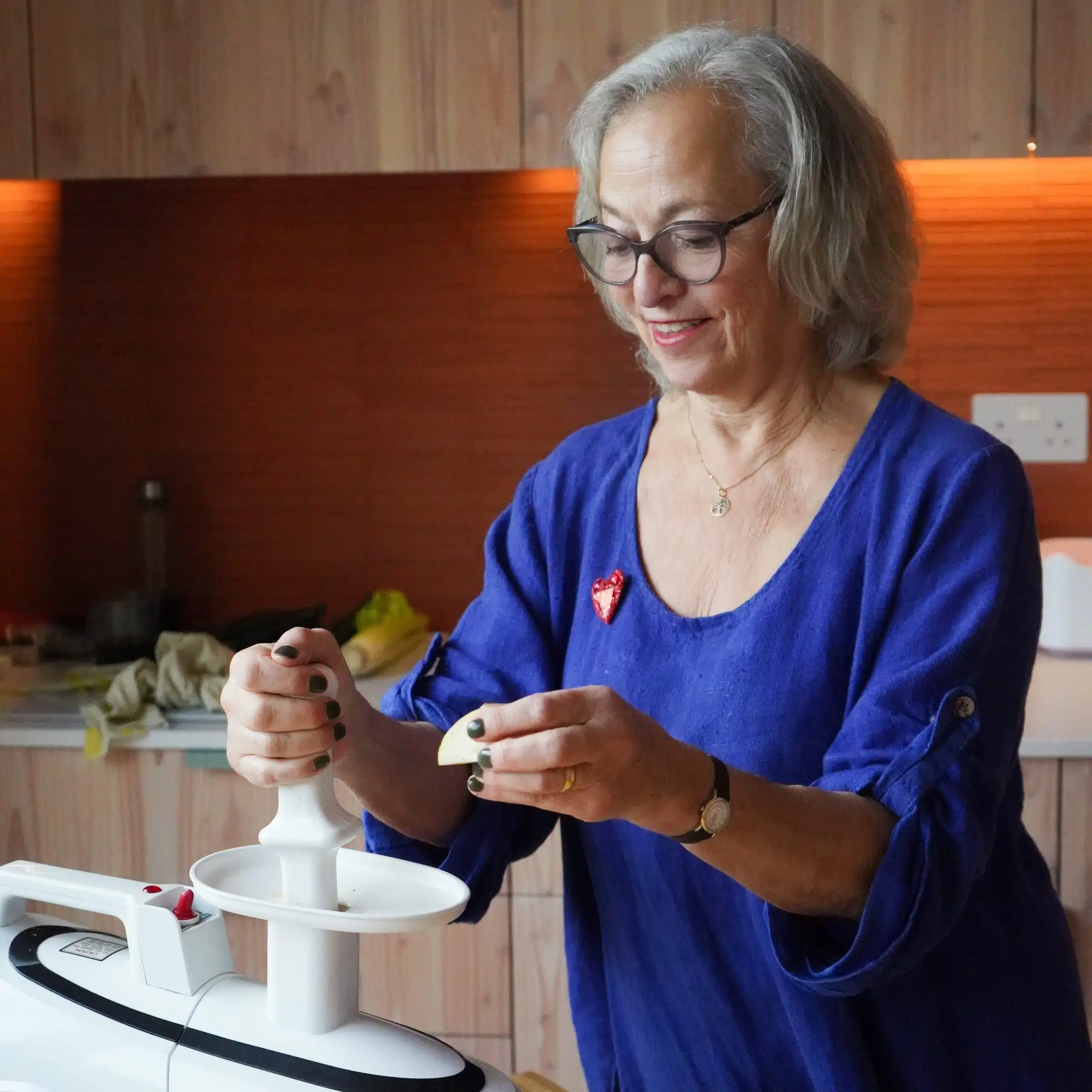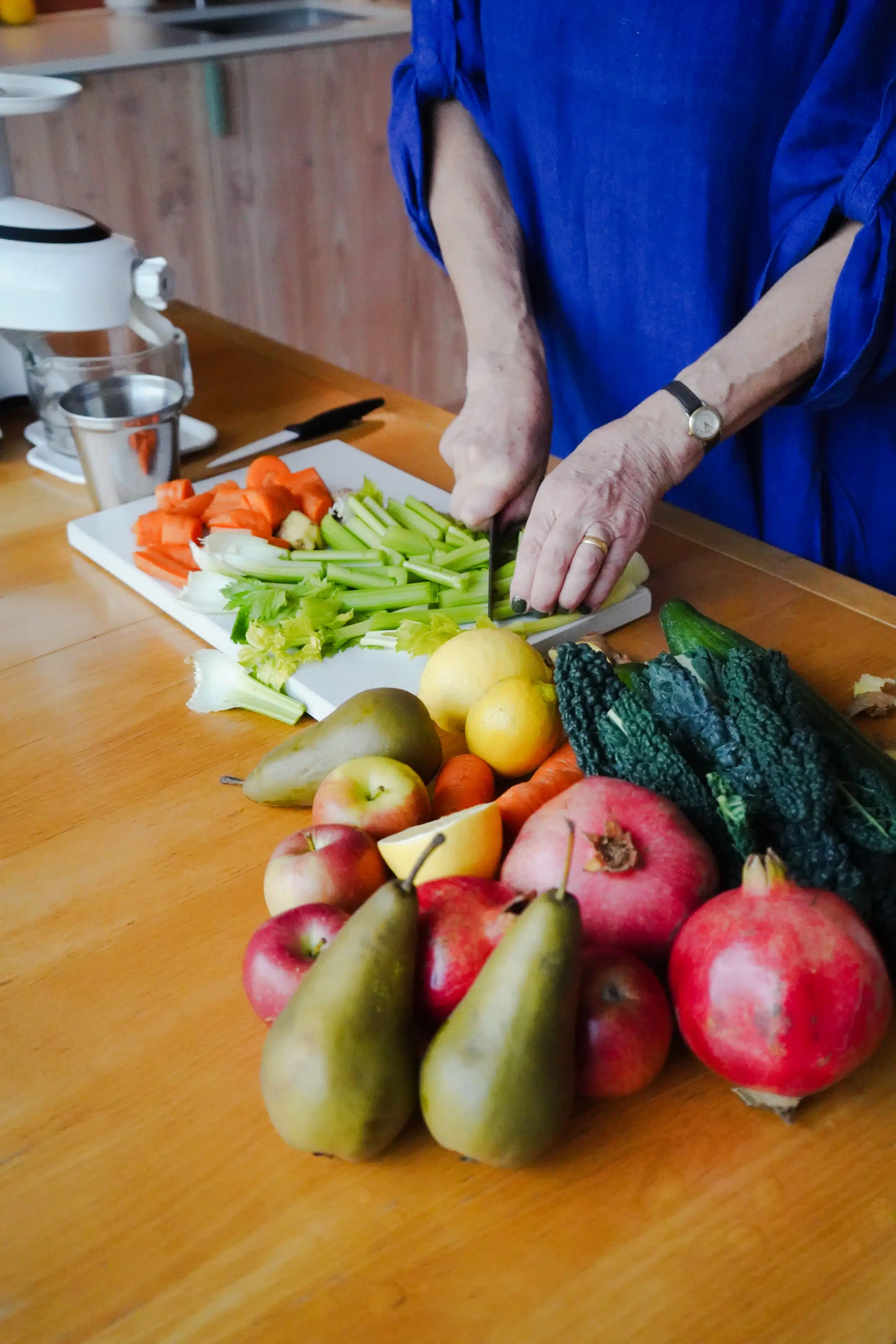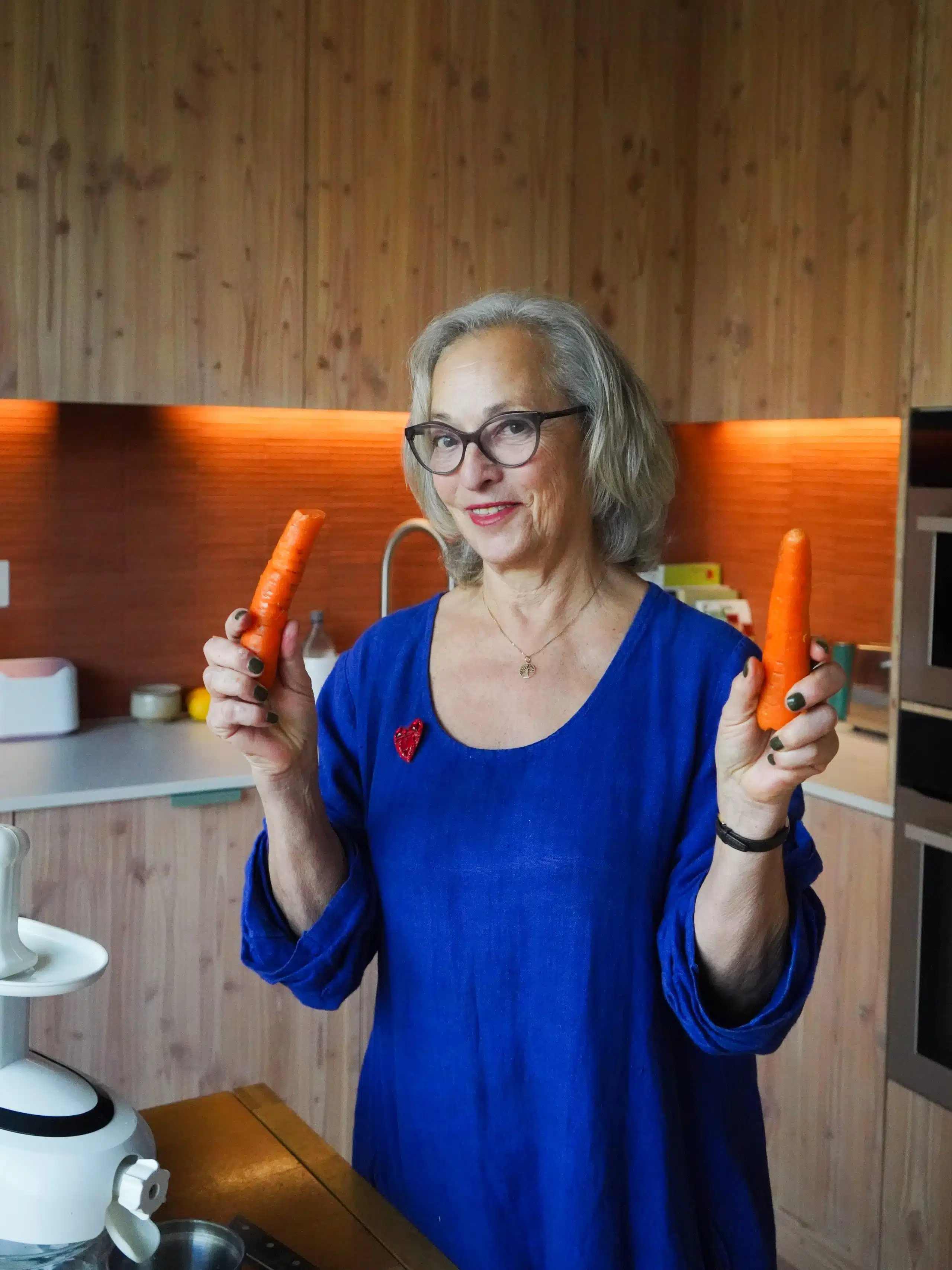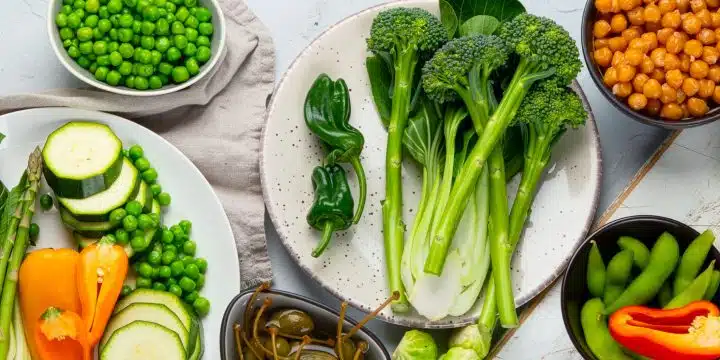When I mention to people that I’m known as “Geri – The Queen of Juicing” amongst friends, their faces often light up with pride as they recount their own morning ritual of tossing fruits, vegetables, oats, and an assortment of supplements into their trusty blender to make their morning “juice”. That’s when I realise there’s a mix-up waiting to be cleared up!
You see, while both juicers and blenders are brilliant for boosting your intake of healthy foods, they really are quite different, and it’s important to know which is which if you’re looking to get the most out of these tools.

Juicers: Extracting the good stuff
Let’s start with juicers. A juicer is your go-to for making a clean, refreshing drink with a delicious subtle taste. It extracts the juice full of nutrients, vitamins and minerals and leaves behind the pulp. It does the work for your body, giving your body a little ‘holiday’ and preserving your energy. You would not eat a whole plate of vegetables see photo below but downing the juice gives you all the nutrients you need in one or two glasses. It’s also a wonderful way for your family and children to get their ‘five a day’ in a fun and colourful way.

I have been juicing for many years and have benefited so much from the nourishment of the juices especially in the mornings. I run my juicing programmes to pass on my passion for juicing and the benefits to all – head over to my juicing page and see which programme suits you best.
But not all juicers are equal!
There are two main types: centrifugal and cold press.
The centrifugal juicer is the one you’ll commonly find in many households. It uses a fast-spinning metal blade that spins against a mesh filter, separating the juice from the flesh via centrifugal force. The downside? This method can sometimes leave the pulp a little wet, which means you might not be getting all the juice you could, leading to more waste and more expense over time. They are also very noisy especially for first thing in the morning.
Cold press juicers stand apart from the rest. They work by slowly pressing the vegetables to extract the juice, avoid any spinning and or heat generation. Plus they are unusually quiet to use. This means there is less oxidation, more nutrients, and a drier pulp, so you’re getting more juice from each bunch of kale, celery stick, carrot or pear. This makes it a more economical and healthy choice in the long run, getting more juice from your product.

Blenders: Keeping it whole
Unlike juicers, blenders mix up everything you put in them, fibre and all, which means the end result is a thicker drink, usually called a smoothie. This can keep you feeling fuller for longer. It’s a different kind of beverage than juice; it’s more of a meal really.
There are various types of blenders available out there: traditional blenders, which are great for smoothies and soups; immersion blenders, which blend directly in the container; and the increasingly popular personal, rechargeable blenders. These personal blenders offer the convenience of blending and enjoying fresh smoothies anywhere, without needing to plug it in – a great solution for those on the move!
Picking the right equipment
Whether you’re planning to juice or blend (or both!), having the right equipment is a must to make sure you’re getting the most out of what you’re putting in.
To help you on your way, I’ve put together a list of my top picks for the job, including the best cold press juicers on the market. Find my recommendations here.
Share this post


